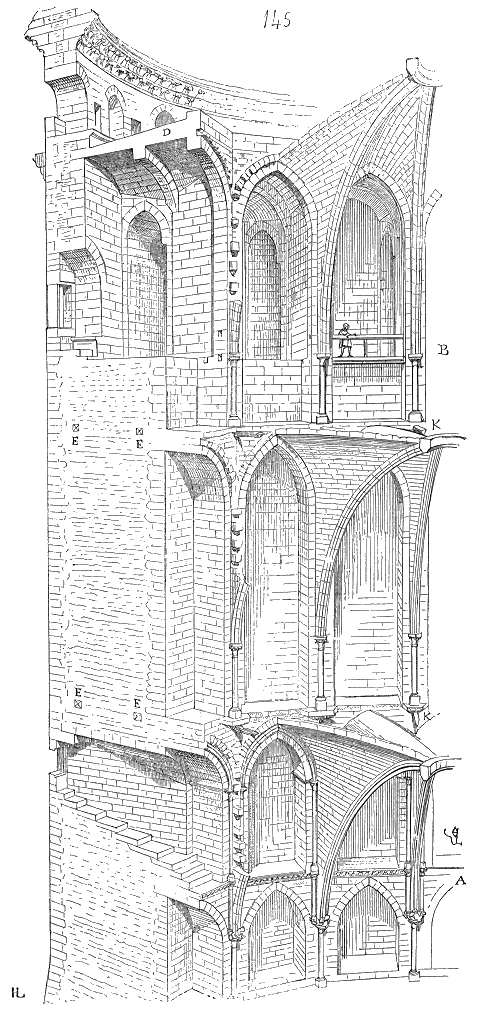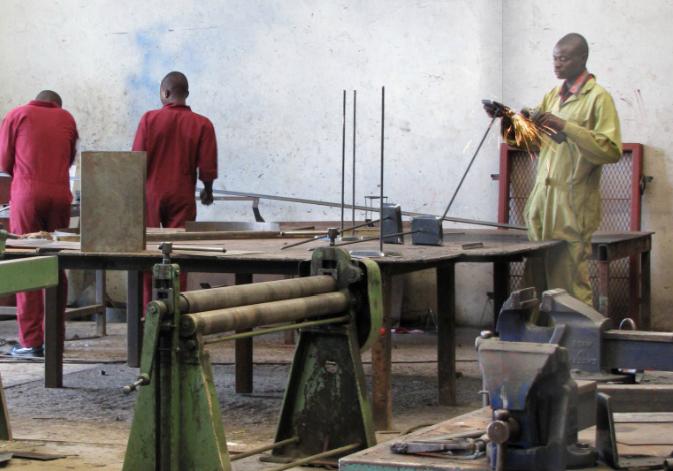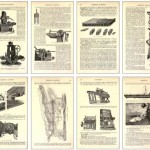People-powered sound amplification at Wall Street. Thanks to Lucas Brouns.
How to Build a Medieval City
The “Dictionnaire raisonné de l’architecture française du XIe au XVIe siècle” is an overwhelming reference work consisting of 9 books (some 5,000 pages in total) on medieval and renaissance architecture in France. It is written in French, as you already suspected, but the detailed illustrations make it worthwhile for all architecture and history devotees. There is really all you need to know to build, for instance, a gothic cathedral, including the gargoyles. The work appeared in 1856 and was written by Eugène Viollet-le-Duc, an architect known for his restorations of medieval buildings. The separate volumes can also be found on the Internet Archive.
Jua Kali: Innovation in Kenya’s Informal Economy
Wandering through winding alleys dotted with makeshift worksheds, one can’t help but feel clouded by the clanging of hammers on metal, grinding of bandsaws on wood, and the shouts of workers making sales. But soon it becomes clear that this cacophony is really a symphony of socioeconomic interactions that form what is known as the informal economy.
In Kenya, engineers in the informal economy are known as jua kali, Swahili for “hot sun,” because they toil each day under intense heat and with limited resources. But despite these conditions, or in fact because of them, the jua kali continuously demonstrate creativity and resourcefulness in solving problems.
“Making Do: Innovation in Kenya’s Informal Economy”, Steve Daniels, 2010. Full book online here and here. Hat tip to Gabriella Rubin. Related: Cameroon blacksmiths.
Makeshift: A Journal of Hidden Creativity
“As populations explode and resources dwindle, the ability to innovate under constraints has become a more pressing competency for individuals, companies, and governments. To document resourceful production Makeshift looks to the grassroots: to the garage tinkerers and under-the-radar businesses that make up the global informal economy. This sector of primarily unprotected and unregistered businesses accounts for over three quarters of employment across Asia, Africa, and Latin America. These maker-entrepreneurs are resilient, flexible, and immensely creative.”
Makeshift, a quarterly magazine and multimedia website highlighting creativity and invention in resource-constrained areas around the world, will launch September 30.
What Technology Wants
All the modern things
like cars and such
have always existed
they’ve just been waiting in a mountain
for the right moment
listening to the irritating noises
of dinosaurs and people
dabbling outside
all the modern things
have always existed
they’ve just been waiting
to come out
and multiply
and take over
it’s their turn now…
“The modern things”, Björk – from the album “Post” (1995). Kevin Kelly’s book “What technology wants” in a nutshell.
Low-tech Bulbs for Dark Slums
Watch the video. Thank you, Joe Blogs and Lalon.







